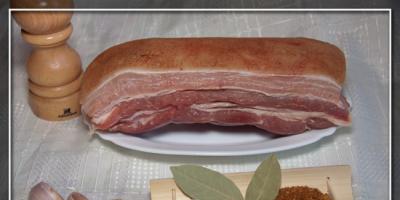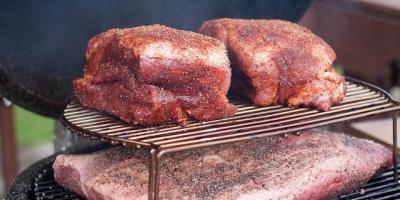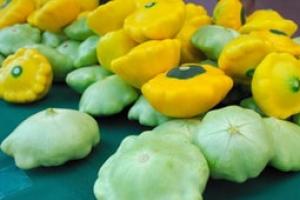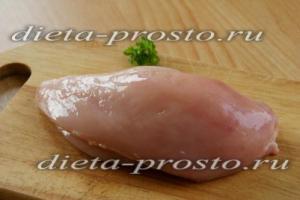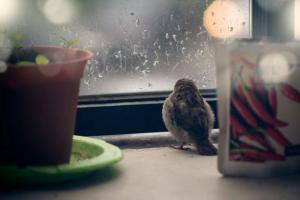There is a lot of hassle with your lawn: does the grass look less decorative than on the package of seeds, does it freeze in places, turns yellow, thins out and is overgrown with weeds? Perhaps you chose the wrong varieties for our climatic conditions. What grass for the lawn would be better suited We’ll tell you exactly what varieties to choose today.

Rules for choosing seeds for a lawn
The grass on the lawn should be perennial, frost-resistant and fast-growing. This important conditions perfect lawn, but not the most important ones. We list the main factors for purchasing seeds for sowing on the lawn, which are best chosen in the store:
- Adaptation to certain climate conditions;
- Good development of the root system;
- Saturation of greenery and uniformity of seedlings;
- Ability for vegetative propagation;
- Good haircut tolerance.
Don't neglect general rules choosing lawn grass: shelf life of the material, pre-treatment of seeds, manufacturer’s warranties, etc.
A short video about lawn grass
Types of grasses and lawn mixtures
It is best to use grasses for the lawn. They have good system roots, produce uniform green shoots, help remove weeds and have an excellent decorative appearance after cutting. The most commonly sown varieties of grass are meadow bluegrass, bentgrass, ryegrass, fescue and others. Various grass mixtures are also popular.

Ryegrass is one of the elite varieties of grass. It looks very beautiful in any place free from planting. This variety is sensitive to watering and loves mineral fertilizing.
Herbal mixtures
- Universal mixture. The herbs in this mixture have rapid germination, tolerance to external conditions, remove weeds and are inexpensive. The only negative is that such a lawn requires frequent mowing.
- Sports varieties. This is a type of cereal mixture for playgrounds, stadiums and places for active recreation.
- Mixtures for specific climates. It is important to choose grass varieties for the lawn not only by appearance, but also by climatic characteristics. There are special mixtures for areas that are under the scorching sun. If you want to sow shady areas, you should pay attention to shade-tolerant varieties of grass.
- Mixtures of flowers and herbs. Such compositions are sown to create a meadow-type lawn. You can choose ready-made mixtures of forbs or create a mix of flowers and grasses that can bloom in turns throughout the summer. For a neat, bright meadow lawn, low-growing greenery is suitable, and you can decorate the area in a rustic style with the help of tall herbs and flowers.
- Elite composition for lawn. Although the mixture of elite herbs is capricious and sensitive to external conditions, it appearance justifies all means. Such herbs look very decorative and can decorate any unplanted areas.
The best varieties of lawn grasses for the Russian climate
1. Meadow bluegrass. This perennial variety- one of the earliest cereals. In its pure form, it is practically not sown, since the roots of this grass take root slowly. Bluegrass is an excellent base for a grass mixture. It produces soft and juicy greens, crowds out weeds and grows well with other grains.

Bluegrass - best foundation for mixture lawn grass. The variety is unpretentious, produces vigorous shoots and can grow on poor soils

Meadow bluegrass is a fast-growing grass, the shoots of which you will see earlier than other crops. It looks bright and very decorative
2. Polevitsa. The dark, rich green of fine bentgrass looks good in any lawn. This grass can withstand frequent mowing, cold winters, and will remove weeds over time.

Thin bentgrass grows densely, without bald spots. It withstands frequent haircuts, practically does not freeze and has a rich green color.
3. Ryegrass. This grass can be found in grass mixtures for lawns. It has excellent decorative qualities, but does not tolerate Russian winters well. Therefore, in its pure form it can be sown only in the southern regions of our country, or used as an annual lawn.

Ryegrass has leaves of medium width. This variety grows very quickly, so some gardeners prefer not to cut it. You can often find ryegrass as part of elite grass mixtures
4. Fescue. Fescue is an ideal lawn grass that does not require special care, both in mono form and as part of forbs. Within a month, the fescue sprouts thickly and is ready for shearing.

Fescue is an excellent grass for the lawn, both in its pure form and as part of a forb. Its succulent shoots appear quickly and fill the lawn with thick greenery
The most common questions about lawn grasses
Our experts will answer the most frequently asked questions of novice gardeners:
1. Why is ordinary grass not suitable for a lawn?
Lawn grass does not deplete the soil, as ordinary weeds do, has small roots and looks much more decorative. The sown grass will grow evenly and improve its decorative appearance after each new cutting.
2. How long does lawn grass take to grow?
Lawn grasses are perennial. Decorative look The seedlings will appear within 1-2 months after sowing. If you properly care for your green lawn, mow it on time, feed it and water it regularly, your lawn will delight you for many years.

Green ryegrass shoots will decorate any lawn. This grass is very thermophilic, so a lawn made of pure ryegrass can only be annual
3. What is the difference between a grass mixture and a single variety of seed?
You can choose a monoculture (one variety of grass) or a mixture of several species. Sowing of one variety is carried out for elite plots, sites and decorative lawns. Such grass, although it produces a lush decorative carpet of greenery, is more expensive and sensitive to care and external conditions. Herb mixtures are more sustainable, produce uniform greens, and require less maintenance.
4. How to get uniform shoots?
It is necessary to prepare the soil well, level it, removing debris and weeds. It will help to sow cereal seeds evenly on the lawn. hand seeder. If you don’t have one, mix the seeds in half with sand and sow them in the ground. After the first year of life, the grass may develop bald patches that need to be sown with new seeds in the spring.

Fescue does not require special care and tolerates sun, partial shade and harsh Russian winters.

Ready-made grass in a roll - very convenient option fast lawn. You just need to lay the rolls correctly, and the lawn is ready. The only disadvantage of such a lawn is the high price
A seeded lawn is a great way to remove weeds and decorate your yard profitably. A green lawn refreshes the yard and pleases the eye. Now all that remains is to decide what kind of lawn grass will grow on your site.
You can grow a beautiful and well-groomed lawn near your home using lawn grass mixtures. Well, what kind of dacha owner? suburban area Don’t you dream of enjoying lush greenery, having picnics and playing with children on green grass? The tradition of lawn care came to us from Western countries and has firmly taken root. A beautiful lawn in the yard is fashionable, aesthetically pleasing, and pleasant.
A velvety lawn carpet perfectly complements the home's design and enhances the overall relaxing atmosphere. As a result, many country property owners are wondering how to grow a beautiful green lawn on their property, what grass seeds or mixtures to use for lawns and how to choose them.
The ideal option for solving the “lawn” issue would be mixtures of lawn grass seeds. Usually they include from 3 to 5 varieties of crops that harmoniously complement each other’s properties. The disadvantages of some seeds are compensated by the advantages of others. As a result, it becomes possible to use mixtures of lawn grass seeds in a variety of climatic conditions without fear for your future lawn.
Why use herbal mixtures?
Using one lawn crop to create beautiful green lawns is the prerogative of professionals. Each type of lawn grass has its own unique set of characteristics:
- Growth rate;
- Shade tolerance;
- Resistance to trampling;
- Resistance to unfavorable climate (severe frosts, droughts).
Each of the factors must be taken into account and possible risks must be anticipated before planting seeds. It may be a matter of a mixture of lawn grasses. The composition of the seed mixture in them is such that the advantages of some types cover the disadvantages of others, forming an ideal combination.
Owners country houses often overcome by doubts about the conditions for growth, as well as the capabilities of this or that cereal. In such cases, it is advisable to give preference to mixtures of lawn seeds that can withstand unfavorable climate conditions, poor soil, drought, and shade.
Popular types
To grow a thick and beautiful, lush green lawn, it is important to take into account the climatic conditions of the area where lawn grass seeds will be planted. Drought, heavy rain, sudden temperature changes - all this can adversely affect seed growth. For our latitudes, where the weather is unstable, some types of lawn seeds are intended. They are not afraid of unfavorable climatic conditions, and the lawns eventually grow green and attractive:
- Meadow fescue – perfect option for use in wet soil. It grows very quickly and already in the first year after sowing forms a beautiful and lush green cover. The only drawback is its fragility (usually no more than 4-5 years), but if you combine it correctly with other herbs, the lawn will remain green for a long time;

- Sheep fescue is a grass that can withstand the harsh conditions of dry and poor soils. Mixing it with red fescue produces a lawn grass seed mixture that forms a beautiful, uniform cover even in the shade of shrubs and trees;

- Reigrass - the grass shows all its beauty on fertile soils, is resistant to trampling, and provides an even cover within a couple of months after sowing. But compared to other types, it does not last long and is not distinguished by the strength of the turf;

- Meadow bluegrass is good for areas with sudden temperature changes and adverse weather conditions. The grass withstands frost and drought, forming a thick turf. The only drawback is susceptibility to diseases ( powdery mildew, rust);

- Bentgrass is the most common variety of lawn grass seed, which can grow in almost any conditions. With abundant watering, it can delight you with lush greenery until the first snow. The disadvantage is slow growth after mowing.

Advantages and disadvantages
Advantages of grass mixture for lawns:
- Affordable price of mixtures;
- Ease of selecting lawn grass mixtures for specific areas depending on climatic conditions.
Disadvantages of seed mixture:
- The need to wait a long time for shoots to appear from a mixture of herbs (2-3 weeks). In unfavorable weather conditions, the period may increase;
- Abundant growth of weeds during the first period of seed growth (2-3 cuttings).
Review of popular herbal mixtures
For cultivation in our latitudes, manufacturers make universal mixtures of lawn seeds that can withstand unfavorable weather and different soils. These include:

- DLF-Trifolium Turfline Ornamental– contains in its seed mixture the hardiest crops that grow slowly, forming a strong turf (meadow fescue, red fescue, reed fescue, bentgrass, bluegrass). This lawn recovers well after mowing and grows both in the sun and in the shade. The mixture is made in two versions: for temperate and hot climates.
- Wolf-Garten Reseeding is a mixture of crops that are used to restore damaged areas of lawns. The composition includes high-quality seeds and active additives.
- Wolf-Garten Sport and Leisure LG– ideal lawn grass mixtures to create lawns for sports and picnics. A universal mixture of crops that will grow on any soil, forming a durable turf.
- LawnCity “6 acres”- a mixture of lawn grass seeds for beginners. The seeds here are selected in such a way as to grow in different conditions and does not require particularly careful care. Bluegrass and fescue provide an even and beautiful turf cover with high resistance to trampling.
- Green carpet "Children's Park"— the softness of the cover determines the name and recommendations for use. This type of lawn is best grown in playgrounds and backyards of country houses.
- "Russian vegetable garden"— special flowering grass mixtures for lawns that lift your spirits. Five different collections give the lawn a special charm. Each buyer will be able to find a shade to their liking. The flower cover does not require careful care.
- Barenburg RTF Premium is a mixture of lawn grass seeds that produces a particularly hardy and beautiful lawn grass. The lawn can withstand severe droughts and recovers on its own, filling in open or damaged areas.
Prices for mixtures of lawn grass seeds range from 300 to 6000-7000 rubles, depending on the variety and weight. Each of them allows you to create an excellent lawn, so you should choose based on their sowing area. And let your lawn be green.
There are a few questions to ask yourself before creating your lawn. Firstly, what exactly do you need a lawn for? For beauty? For sports games in the fresh air? Or for everything at once? Secondly, what are the conditions in the area intended for the lawn - sun, shade, wet, dry, high or low soil acidity? And based on this, make a choice from the list the best manufacturers lawn grass.
As a rule, for Russian climate zone Only certain varieties of herbs are suitable. Therefore, before purchasing, you should carefully read the composition of the mixture and determine whether it contains the following species: meadow bluegrass, red fescue and perennial ryegrass. Sometimes bentgrass (its different types) is added to them. Despite the certain scarcity of the main set, each species has many varieties that differ in appearance, growth rate, resistance to damage, and so on.
There are several requirements for high-quality lawn mixtures:
- they must take root quickly (even on soil poor in nutrients);
- after mowing, it grows more slowly, but the brightness of color and density should remain the same;
- can withstand temperature changes typical for Russia;
- be resistant to diseases and pests.
If the lawn at your dacha has already grown, you should think about buying a lawn mower; we have selected the best models for you:
In Russia, five manufacturers of herbal mixtures are most popular.
5. Green Meadow
 The American company Green Meadow opens the rating of manufacturers of high-quality grass mixtures for lawns. It is one of the most famous suppliers of a variety of plants in both the USA and Europe. It has a rich assortment, however, Russian lawn lovers should remember that a rare mixture will take root on Russian soil. The basis of the mixture is perennial ryegrass; it is very beautiful to look at, but has a short lifespan. Ryegrass is included in many mixtures, as its rapid germination will provide the lawn with a beautiful, even color at the very beginning, and then give way to longer-lived grasses. However, it still does not tolerate frost well and dies at temperatures of -15 and below. Residents of the southern regions of Russia can enjoy its bright malachite color, but “Europeans” and Siberians should think twice about it.
The American company Green Meadow opens the rating of manufacturers of high-quality grass mixtures for lawns. It is one of the most famous suppliers of a variety of plants in both the USA and Europe. It has a rich assortment, however, Russian lawn lovers should remember that a rare mixture will take root on Russian soil. The basis of the mixture is perennial ryegrass; it is very beautiful to look at, but has a short lifespan. Ryegrass is included in many mixtures, as its rapid germination will provide the lawn with a beautiful, even color at the very beginning, and then give way to longer-lived grasses. However, it still does not tolerate frost well and dies at temperatures of -15 and below. Residents of the southern regions of Russia can enjoy its bright malachite color, but “Europeans” and Siberians should think twice about it.
4. Lilliput
 The lawn mixture from Liliput is specially developed for the harsh Russian climate and is made as undemanding as possible. This is a lawn for the lazy (or for those who can't garden more than one day every couple of weeks). The grass mixture from "Liliput" is based on meadow bluegrass and four parts different varieties fescue All varieties are very hardy and resistant to negative factors. environment– from temperature changes to illnesses.
The lawn mixture from Liliput is specially developed for the harsh Russian climate and is made as undemanding as possible. This is a lawn for the lazy (or for those who can't garden more than one day every couple of weeks). The grass mixture from "Liliput" is based on meadow bluegrass and four parts different varieties fescue All varieties are very hardy and resistant to negative factors. environment– from temperature changes to illnesses.
3. Green square
 Another domestic manufacturer opens the top 3 best lawn grass mixtures. It differs from “Liliput” in both a larger number of options and more favorable price. Although the difference in price begins to be felt on a large scale, for example, if the lawn area starts from 50 m2 or more. There are mixtures specifically designed for various climatic regions of Russia - from the subtropical zone of the Caucasus to the arid Lower Volga region and harsh Siberia.
Another domestic manufacturer opens the top 3 best lawn grass mixtures. It differs from “Liliput” in both a larger number of options and more favorable price. Although the difference in price begins to be felt on a large scale, for example, if the lawn area starts from 50 m2 or more. There are mixtures specifically designed for various climatic regions of Russia - from the subtropical zone of the Caucasus to the arid Lower Volga region and harsh Siberia.
2.Powerseed
 Powerseed lawn mixtures are adapted to western/central US climates and are therefore suitable for central and southern regions of Russia. One of the most popular mixtures is for quickly restoring lawns. It is convenient that the old lawn does not need to be dug up, fertilized, or watered regularly. It just grows on its own - what else do you need?
Powerseed lawn mixtures are adapted to western/central US climates and are therefore suitable for central and southern regions of Russia. One of the most popular mixtures is for quickly restoring lawns. It is convenient that the old lawn does not need to be dug up, fertilized, or watered regularly. It just grows on its own - what else do you need?
1. Terragrün
 One of distinctive features Terragrün - our own mixtures, in which wild species and cultivated varieties are mixed in various proportions. At the same time, the germination rate of seeds from German craftsmen reaches 95% (one of the highest rates on the market). A wide range of products will help create a lawn not only in the favorable climatic conditions of the south of Russia, but also in other, colder regions.
One of distinctive features Terragrün - our own mixtures, in which wild species and cultivated varieties are mixed in various proportions. At the same time, the germination rate of seeds from German craftsmen reaches 95% (one of the highest rates on the market). A wide range of products will help create a lawn not only in the favorable climatic conditions of the south of Russia, but also in other, colder regions.
The varieties “Universal”, “Canada Green”, and “Golf Master” are very popular on the market. By the way, the latter, despite the specialized name, is actually very stable and looks great in the lawn. The only drawback is that it requires good drainage system, since it does not tolerate soil freezing and may die.
The best herb is a vague concept because... the best grass will vary for different conditions.
Everyone who thinks about installing a lawn sooner or later begins to look for answers to the question of what kind of grass will be the best for a lawn, what varieties to choose for areas in our climate, and most importantly, what kind of grass will be the most reliable and does not require serious care .
Before we talk about the most suitable varieties lawn grasses, we will determine by what criteria you can distinguish truly high-quality grass.
What are the requirements for good lawn grass?
The most important requirement is that lawn grass must be perennial plant, but which one is the best of all the representatives of perennials? Of course, perennial cereals should be especially highlighted. They will not need to be sown with the onset of each new season. It will be enough to spend time and effort once on laying a grass lawn in order to subsequently maintain it in order, providing minimal maintenance. Below are the main criteria by which you should select high-quality lawn grass.
Firstly, plants must cope well with frost and temperature changes. Secondly, it is important that they grow well in the Russian climate. Thirdly, they had an aesthetic appearance. Fourthly, they were distinguished by a strong root system, capable of developing even on compacted soils.
Among other things, grasses should recover quickly after mowing and respond well to fertilizing mineral fertilizers, have the ability to reproduce vegetatively.
What lawn grass is most suitable for creating a lawn in the country's climate?
Taking into account the requirements listed above, we can distinguish only three types of herbs that meet them on all counts. These plants will cope well with the vagaries of the weather in Russia and will be able to grow and develop, requiring minimal care. We are talking about thin bentgrass, meadow bluegrass and red fescue. All these are examples of short-rhizome cereal plants.
Fescue, bluegrass and bentgrass respond really well to temperature changes and unexpected spring frosts. Their rhizomes can withstand the severest frosts, forming a dense turf through which weeds will not be able to break through. Grasses quickly recover after mowing, reproduce vegetatively, and can grow without requiring reseeding for many years.
When studying grass mixtures in stores, choose those that contain the highest percentage of the above-mentioned cereals. Please note that often the composition of mixtures can be placed on the packaging in Latin. So, for example, the usual thin floorboard is called Agrostis tenuis, fescue - Festuca rubra, meadow bluegrass - Poa pratensis. Remember these names so you can determine if the plants you need are present in your lawn grass mixtures.
What else is included in good lawn mixtures?

Lawn grass mixture may contain different types herbs
In fact, not only a lawn grass mixture that includes cereals can be used to create a beautiful green canvas; reviews from site owners and landscape designers confirm that there are also other plants that are excellent for growing in the country’s climate. All of them also tolerate frost well and do not require special complex care. The only thing that is important to understand is that we are talking about additional components. This means that they should not form the bulk of the mixture.
Listed below are the main types of herbs used as additional components.
Bentgrass has one main advantage - it grows intensively. The downside is that the shoots are not the most beautiful reddish tint, which introduce an imbalance into the overall uniform color of the canvas.
Other types of bluegrass besides the previously mentioned meadow grass, for example, common or narrow-leaved. These plants are not as “tenacious” as their meadow counterpart; they need to be reseeded every 5 years. Not up to par and decorative properties. However, as an additional component of the grass mixture, bluegrass of one and two types would be quite appropriate.
Herbs for specific climates
For certain climate conditions on the site, you can select certain types of grass. Yes, they are not universal, but in some areas it would be appropriate to plant them.
For example, oak grass bluegrass grows and develops well in partial shade. Which means that this best variety for installing lawn grass in the shade garden trees, buildings. With its help, it will be possible to achieve the formation of a uniform green canvas throughout the entire territory of the site, regardless of how intensely they are illuminated by the sun. An important point is that bluegrass does not tolerate regular mowing at all, since it does not have a reliable root system. This needs to be taken into account.
Another option is swamp bluegrass, which can decorate an area with a high degree of humidity, where it is not possible to install a drainage layer. The plant forms a beautiful, rich green cover with a powerful root system, but, unfortunately, it quickly dies, so it often needs reseeding. Great option― a mix of their white bentgrass and marsh bluegrass, which can grow in marshy soils. Bentgrass is not as spectacular as bluegrass, but it can grow without needing reseeding for 8 years.
For device parterre lawns that do not involve mechanical loads, you can plant dog bentgrass. The plant is amazingly beautiful and allows you to create the effect of velvet fabric on the lawn due to the thin and delicate blades of grass that shimmer in emerald color. The problem is that this variety of bentgrass is not long-lived (lives no more than 5 years), is not able to form a reliable root system and does not tolerate trampling.
If the main goal is to select fast-growing grass to form a lawn within several months, then you can opt for a mixture that contains meadow fescue. It will cover the area with a thick cover of grass in 7-8 weeks and can be used in its pure form. The downside of the cereal is its short lifespan, only 4 years, and a weak root system.
What to look for when choosing seeds for your lawn?
Typically, packaging with grass mixtures contains information about what type of lawn they are suitable for and in what conditions they will grow best. Study this information before making a choice. Also pay attention to the seed production date, manufacturing company, country and seeding rate.
High-quality seeds for a beautiful lawn must be sold with a country certificate, meanwhile, they must be adapted to the climate in your region. When choosing herbs, take into account the composition of the soil on the site, the degree of lighting and the level groundwater. All these indicators influence the growth and development of the lawn.
It is important that the seeds match the type of lawn. For a sports lawn, for example, this is one mixture of grass seeds that are resistant to trampling, and for a parterre lawn - these are other grass seeds, as beautiful as possible, but not at all intended for loads. This important points things to think about when choosing the best grass for the site.
The lawn creates harmony in the garden, emphasizing the beauty flower beds, lush greenery of spreading bushes and neatness of paths, and also gives the site an aristocratic appearance. Thanks to the lawn, the chances of weeds to invade the territory are significantly reduced, the garden looks more well-groomed and, in addition, green grass absorbs dust and improves the microclimate near your home. There is no doubt - a lawn has many advantages, and if everything is done correctly, you are unlikely to regret the time and money spent. But which lawn is better: rolled or seeded, parterre or regular?
What is better: buy a rolled lawn or sow the grass yourself?
On the question of how to choose a lawn, opinions often differ. Some people want to quickly decorate the area with an ideal emerald lawn, while the price of the issue does not play a special role, while others would prefer to save money and sow the area with grass themselves, having previously studied the structure of the lawn and selected the most suitable grass mixture.

Lawns for the lazy also include clover and Moorish lawns.
Grass lawns are also different: parterre lawns need to be carefully looked after in order to maintain their impeccable appearance; ordinary garden lawns do not look so elegant, but they are easier to care for, and you can safely walk on them. The so-called lawn grass for the lazy is gaining popularity - special grass mixtures from unpretentious plants that do not require frequent cutting and watering. Lawns for the lazy can also be classified as lawns, but they have their pros and cons, which are definitely worth paying attention to.
Video about lawn in rolls or seeds, which is better
If you do not take into account the cost of lawn in rolls, you can count many advantages:
- Rolled lawn grass is frost-resistant, so it can be laid until late autumn without fear that the turf will not have time to take root and will freeze;
- there is no need to wait for the grass to grow, the lawn looks impressive immediately after laying;
- weeds do not appear on rolled lawns for one or two seasons;
- the quality of the finished turf is very high, it does not fall apart, has good density and a uniform, rich color;
- Lawn in rolls is resistant to damping off, drought, heavy rainfall and trampling.

You most likely won’t be able to roll out the rolls alone, so immediately budget for the costs of hiring help.
Despite so many advantages, rolled lawn has mixed reviews. Firstly, it does not grow well in shaded areas; secondly, felt may soon appear under the grass, which contributes to its spread and spoils its appearance; thirdly, lawn in rolls is less durable than seeded lawn. In addition, installing a rolled lawn requires several hands due to the heaviness of the turf. You most likely won’t be able to roll out the rolls alone, so immediately budget for the costs of hiring help. look after roll lawn you will need to do exactly the same as after sowing: regularly mow, water, feed, comb out and aerate the soil.
Of course, creating a lawn with your own hands takes a lot of time and requires a lot of effort. This is precisely the main disadvantage of a seeded lawn. In addition, you will have to be patient: at the beginning of summer you will need to complete everything necessary work, sow the grass mixture, then conscientiously care for the grass throughout the entire season and prepare it properly for winter. And only next year you will be able to evaluate the result of your efforts.

Sometimes it’s not easy to decide which lawn to choose, because both rolled and seeded lawns have their drawbacks
But you will be rewarded with the following advantages of a seeded lawn:
- durability and resistance to environmental influences - provided that the grass mixture is correctly selected, the cereals you sow will immediately adapt to the local natural conditions and the type of soil on your site;
- the variety of lawn grasses allows you to choose a grass mixture for any conditions (adapted for growth in shaded areas, for trampling, intended for active recreation or for decorative purposes);
- if bald spots appear on the lawn, you can always sow the grass;
- seeded lawn is more unpretentious than rolled lawn.
Sometimes it’s not easy to decide which lawn to choose, because both rolled and seeded lawns have their drawbacks. But no matter which option you choose, the appearance of the lawn will depend largely on how proper care in the future you will provide him with.

An experienced consultant in a specialized store will definitely tell you how to choose lawn grass taking into account your wishes
Which lawn grass to choose to create a lawn with your own hands?
If you decide to try your hand at planting a lawn yourself, you will have to figure out which grass is best for the lawn, taking into account the climate, soil and the degree of expected load on the lawn - will it serve a purely decorative function or will you be walking on the grass and playing? play active games on it.
As the definition of a lawn states, its composition mainly includes perennial herbs family of cereals. Most often, grass mixtures contain a certain percentage of bluegrass, fescue and raygrass seeds. Various combinations of these basic components with minor additions of other plant species provide a huge variety of grass mixtures on the market. An experienced consultant in a specialized store will definitely tell you how to choose lawn grass, taking into account your wishes and the conditions in which the grass will grow.
Meadow bluegrass

With insufficient care, it loses its beautiful malachite color and gloss, thins out, but is able to quickly recover
Resistant to early frosts and frosty winters, durable, but in the first year it is very weak and can freeze or be damaged by weeds. By the third year it turns into a thick carpet of pleasant color. It begins to turn green earlier than other herbs and grows well in a sunny place for decades, but in the shade it can become sick with powdery grass and die. Relates well to plenty of water, loamy soils and liming. With insufficient care, it loses its beautiful malachite color and luster, thins out, but is able to quickly recover if you remember about it in time.
Red fescue
A drought-resistant, shade-tolerant plant, it grows slowly in the first year and then grows rapidly. Forms dense turf, soft and silky. This is lawn grass for the lazy - even if you forget to water it on time or feed it, the plants will still not die.
Bentgrass
It grows quickly and is characterized by increased endurance, forms a very dense turf, and it is almost impossible to trample it. Ideal for children's playgrounds.
Video about growing a lawn with your own hands
Perennial ryegrass
Quite tough dark green grass, grows quickly and is not easily trampled. Due to the fact that reigrass is much brighter than other types of grasses in grass mixtures, it will stand out against the background of delicate greenery on the lawn.
Bluegrass and fescue get along well on the same lawn, complementing each other; these plants are best suited for creating a high-quality lawn in any climatic conditions, different types soil. The addition of ryegrass is necessary to ensure that the lawn turns green as quickly as possible while the bluegrass and fescue are gaining strength. The main thing is that there is not too much ryegrass in the grass mixture, otherwise it will crush the seedlings of the main lawn plants.

